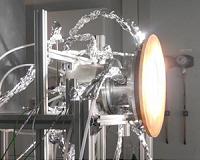 |
Seoul (UPI) Jan 27, 2011 South Korea's national policy on green growth is seen as a model in green-powered development, experts say. "I want to put forward 'Low Carbon, Green Growth' as the core of the Republic's (South Korea) new vision," South Korean President Lee Myung- bak said in an August 2008 speech on the country's 60th anniversary. Seoul announced the "Green New Deal" in January 2009 as part of a national stimulus package to invest $38.5 billion from 2009 to 2012 in nine key environmental projects, projected to create 956,000 jobs in the green sector. The following month, Seoul launched the National Strategy for Green Growth, in which the government pledged to spend $84.5 billion, or 2 percent of gross domestic product each year, on green growth by 2013. Seoul aims to cut carbon emissions by 30 percent from a 2020 forecast, or a 4 percent reduction from 2005 levels. "They put their money where their mouth is," Alex Bowen, a research fellow at the London School of Economics' Grantham Research Institute on Climate Change and the Environment told SolveClimate News. "I think there is a political head of steam," he said, for other countries to follow suit. In June, South Korea established the Global Green Growth Institute, an international research arm that aims to develop and model theories of green growth for worldwide use, headed by former Prime Minister Han Seung-soo. The government said it would contribute $10 million a year for the next three years to the institute. Seoul plans to open GGGI regional offices in five countries, including China and Brazil, and establish it as an international organization by 2012. So far the institute has selected Indonesia, Brazil and Ethiopia as beneficiaries of its support programs for green growth planning. On the sidelines of U.N. climate talks in Cancun, Mexico, in December, Denmark became the first foreign government to join the GGGI, pledging to invest $5 million in the initiative each year for the next three years. China, India and other emerging economies "think that greening their economies is not a choice anymore," said Jung Tae-yong, executive director of the Global Green Growth Institute and a former economist at the Asian Development Bank. Instead, Jung said, a green growth policy is now crucial "to survive in these competitive economic conditions." Korea, Asia's fourth-largest energy consumer, relies on imports for 95 percent of its energy. "For us, energy security is very important," Jung said.
Share This Article With Planet Earth
Related Links Powering The World in the 21st Century at Energy-Daily.com
 New Reactor Paves The Way For Efficiently Producing Fuel From Sunlight
New Reactor Paves The Way For Efficiently Producing Fuel From SunlightPasadena CA (SPX) Jan 21, 2011 Using a common metal most famously found in self-cleaning ovens, Sossina Haile hopes to change our energy future. The metal is cerium oxide-or ceria-and it is the centerpiece of a promising new technology developed by Haile and her colleagues that concentrates solar energy and uses it to efficiently convert carbon dioxide and water into fuels. Solar energy has long been touted as the solut ... read more |
|
| The content herein, unless otherwise known to be public domain, are Copyright 1995-2010 - SpaceDaily. AFP and UPI Wire Stories are copyright Agence France-Presse and United Press International. ESA Portal Reports are copyright European Space Agency. All NASA sourced material is public domain. Additional copyrights may apply in whole or part to other bona fide parties. Advertising does not imply endorsement,agreement or approval of any opinions, statements or information provided by SpaceDaily on any Web page published or hosted by SpaceDaily. Privacy Statement |